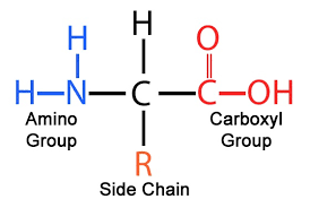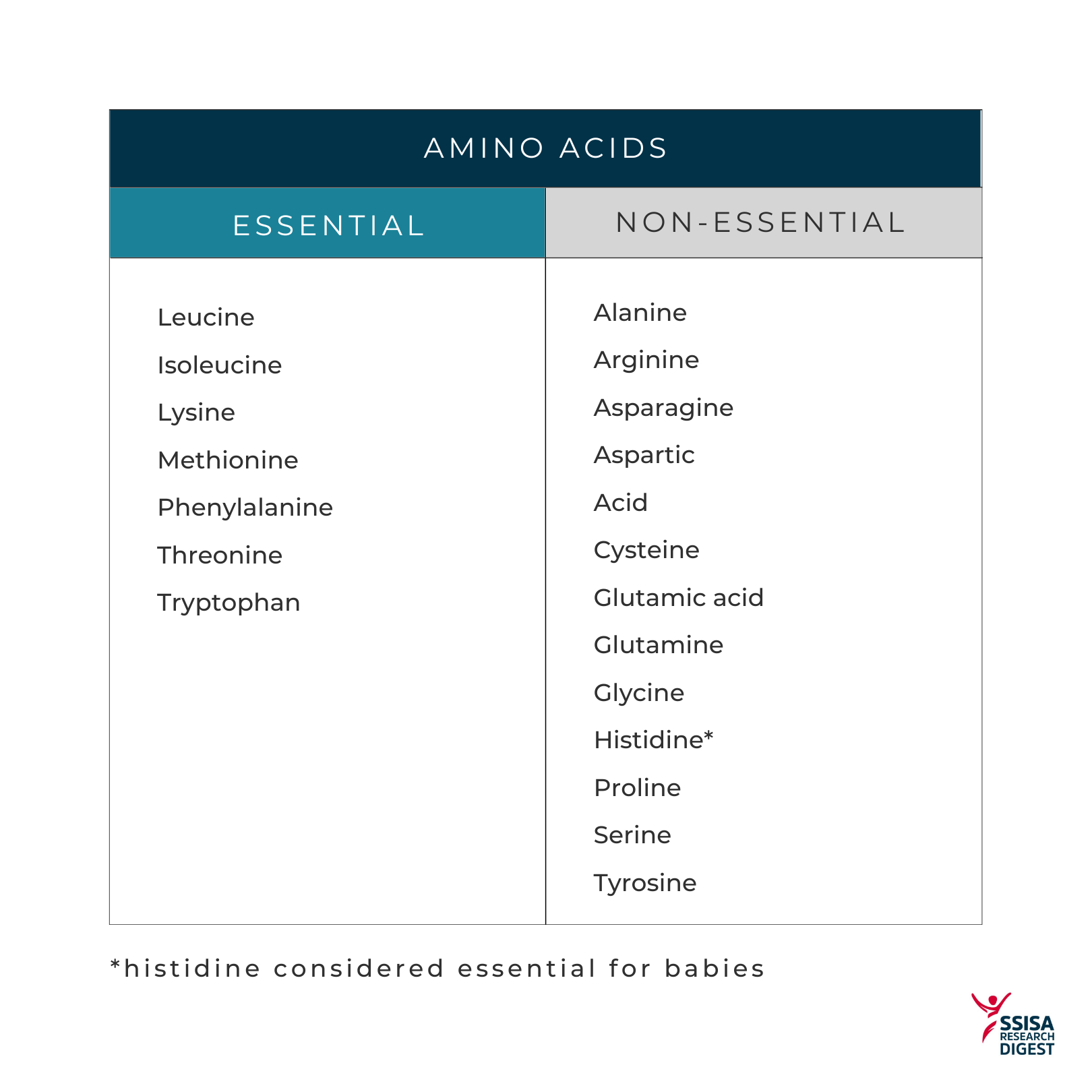GRIT
Protein Basics
Protein Basics
As health, wellness, and fitness enthusiasts, we are constantly bombarded with advertisements for protein bars, shakes, and powders. This tends to make us believe that protein supplementation is the essential “magic bullet” to improve our performance and body composition. These “protein punters” claim that protein helps with weight loss, building muscle, and makes you stronger and faster, but what does science have to say about protein and protein supplementation? What, why, where, how, when? In this series we will look at the science behind protein and protein supplementation. We will bring you all the necessary information to make evidence-based, informed, decisions about your protein intake.
What are proteins?
Proteins are made up of amino acids glued together by peptide bonds into long chains called peptides. A peptide is classified as a protein when there are more than 21 amino acids. All amino acids have the same core chemical structure made up of carbon (C), hydrogen (H), oxygen (O) and nitrogen (N) but vary by an attached group (known as a side chain - R). Like a logo identifies a company, so too does the side chain determine the identity of the amino acid.

There are a total of 20 amino acids which can be characterised into three groups based on their necessity within the body: essential and non-essential. Essential amino acids cannot be made by the body, and therefore, need to be supplied by dietary intake. Non-essential amino acids are produced by the body (often through conversion of essential amino acids or breakdown of bodily proteins). They don’t need to be consumed through dietary intake. In some cases, such as illness or stress, certain amino acids may become essential (i.e., must be consumed in your diet). These are known as conditional amino acids and consumption can be done through diet strategies or supplementation (following recommendations from health care professionals).

Why do we need them?
Proteins are the “building blocks” of life and all cells in the human body contain protein. Proteins are used for growth and repair of tissue, regulation of metabolic pathways, and as a source of energy. Additionally, they are key components of almost all the body’s enzymes, hormones (e.g., insulin and adrenaline), and neurotransmitters (cell signalling molecules). They are responsible for important bodily functions like maintaining fluid balance, transporting nutrients in and out of cells, carrying oxygen and regulating blood clotting(1). It is, therefore, no surprise that inadequate dietary protein can lead to a variety of conditions such as stunted growth, anaemia, physical weakness, oedema, vascular dysfunction, and impaired immunity(2).
But what about the claims on exercise performance and weight loss?
The International Society of Sports Nutrition (ISSN) published a position statement on protein for healthy, exercising individuals(3). They concluded that protein intake can increase muscle protein synthesis (process for muscle building and repair) and that this effect can be boosted when intake is before or after resistance exercise. Additionally, protein supplementation appears to have a positive impact on strength performance. Alongside these observations, protein supplementation (when combined with the appropriate diet and exercise) has shown to increase muscle size and mass as well as promote greater losses in fat mass and improved body composition (3).
In terms of endurance performance, protein intake appears to have little direct effect on endurance performance. However, there is evidence to suggest that consuming a carbohydrate-rich drink with some added protein may suppress markers of muscle damage as well as decrease the feeling of muscle soreness 12 to 24 hours after exercise3. Additionally, adequate dietary protein plays an important role in recovery from endurance training which ultimately enhances adaptation (4).
Where can we get our protein from?
Once eaten, proteins are digested into their amino acids which can then absorbed and used by the body. Not all proteins we eat contain all the essential amino acids and so it is important to know which proteins provide us with the amino acids we need. There are a few points of consideration for protein sources which include completeness, bioavailability, and quality(1,3).
A “complete” protein contains all of the 8 essential amino acids whereas an “incomplete” protein contains high amounts of several essential amino acids but has low/no amounts of a few. Examples of complete proteins include eggs, meat, poultry, fish, and soya. Examples of incomplete proteins: cereals and pulses(1).
The concept of bioavailability of a protein is derived from the specific ratio and amounts of essential and non-essential amino acids. This can be measured in the form of a biological value (BV) which is the percentage of protein that is retained for use by the body and reflects how closely the protein source matches the body’s requirements1. For example, an egg has a BV of 100 which means that this protein source most closely matches the ratio of essential and non-essential amino acids required by the body. Other foods with high BV values (70 to 100) include dairy, meat, fish, poultry and soya whereas nuts, seeds, and pulses tend to have a lower BV (<70)1.
Protein quality attempts to quantify the ability of a protein to stimulate muscle protein synthesis and growth. Studies tend to suggest that protein sources with high quantities of essential amino acids (e.g., animal and dairy) have a greater effect on muscle protein synthesis. Specifically, ISSN have highlighted the significant effects of branched chain amino acids (BCAAs) which include leucine, isoleucine, and valine. It is suggested that these amino acids play key roles in muscle protein synthesis and sufficient quantities should be considered to maximise muscle growth and recovery3.
Where to from here?
By now we hope we have established exactly what protein is and why it is an important component of our diets. Check out our other resources where we dive into how much protein you need as well as timing of intake and whey supplementation.
To bring you the most evidence-based and cutting information in the fields of sports and exercise science and health, SSISA works alongside the UCT Research Centre for Health through Physical Activity, Lifestyle and Sport (HPALS) to disseminate the latest research. HPALS research focuses on optimizing human performance and promoting health and well-being through physical activity, sports participation, healthy eating and good sleep hygiene. Their work begins at the DNA, to the human performance laboratory and ultimately to the community.
References
1. The Complete Guide to Sports Nutrition (9th Edition) - Anita Bean - Google Books [Internet]. [cited 2022 Sep 20]. Available from: https://books.google.co.za/books?hl=en&lr=&id=IBBfEAAAQBAJ&oi=fnd&pg=PP1&dq=The+Complete+Guide+to+Sports+Nutrition:+8th+edition&ots=QXFgV6xWjZ&sig=oSW5kTzVJVCcoblWlx1OJgsBC9c&redir_esc=y#v=onepage&q=The Complete Guide to Sports Nutrition%3A 8th edition&f=false
2. Wu G. Dietary protein intake and human health. Food Funct [Internet]. 2016 Mar 1 [cited 2022 Sep 23];7(3):1251–65. Available from: https://pubmed-ncbi-nlm-nih-gov.ezproxy.uct.ac.za/26797090/
3. Jäger R, Kerksick CM, Campbell BI, Cribb PJ, Wells SD, Skwiat TM, et al. International Society of Sports Nutrition Position Stand: Protein and exercise. J Int Soc Sports Nutr. 2017 Jun 20;14(1).
4. Moore D, Camera D, … JAAP, 2014 undefined. Beyond muscle hypertrophy: why dietary protein is important for endurance athletes. cdnsciencepub.com [Internet]. 2014 [cited 2022 Oct 4];39(9):987–97. Available from: https://cdnsciencepub.com/doi/abs/10.1139/apnm-2013-0591
Empty space, drag to resize
This information was taken from the first part of our "Unpacking Protein" course in research digest. Click the button below to head to the course page and sign up to research digest for only R90/month to learn more about protein.
Empty space, drag to resize
50% off
SSISA Research Digest

50% off
SSISA Research Digest


